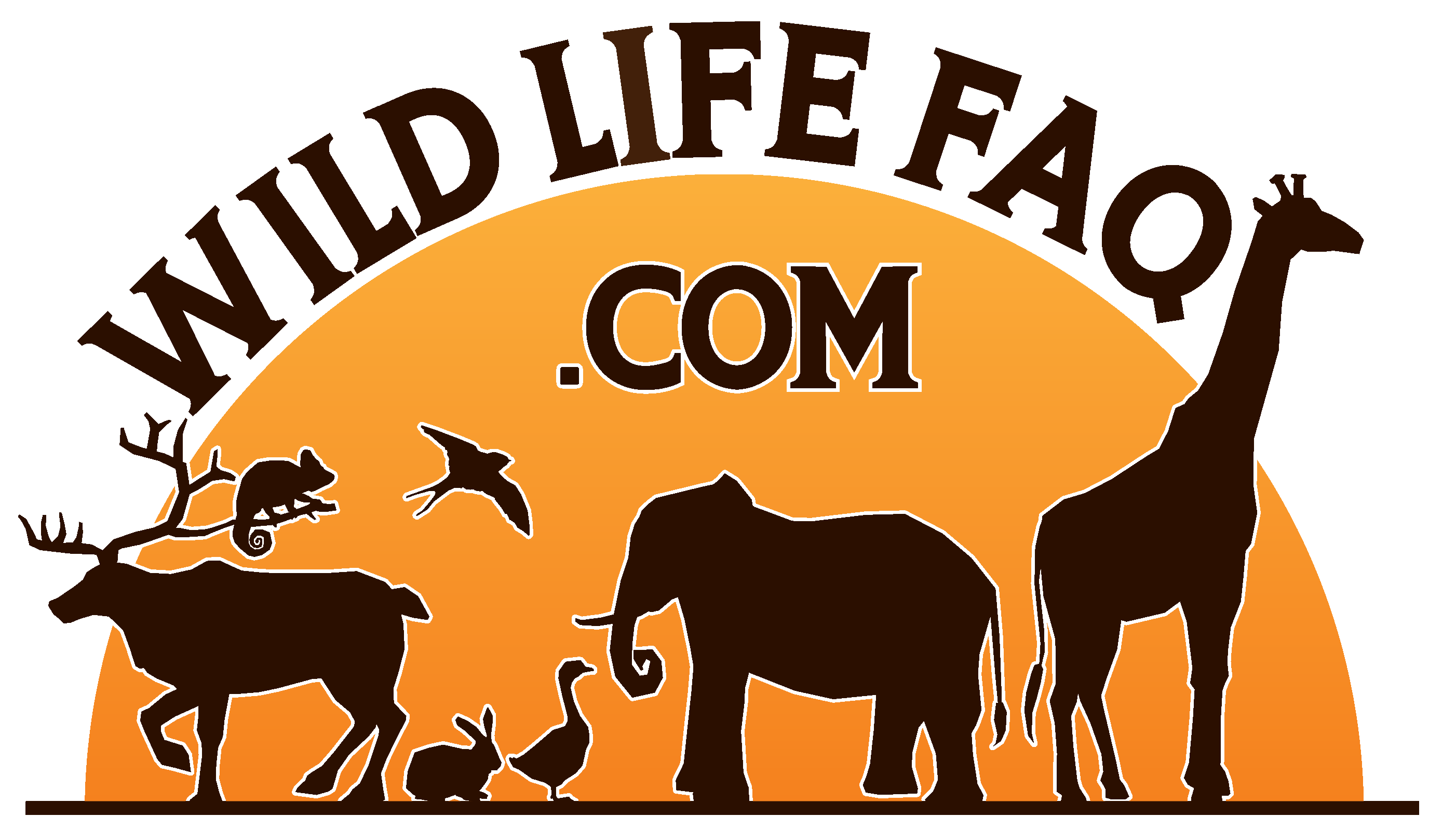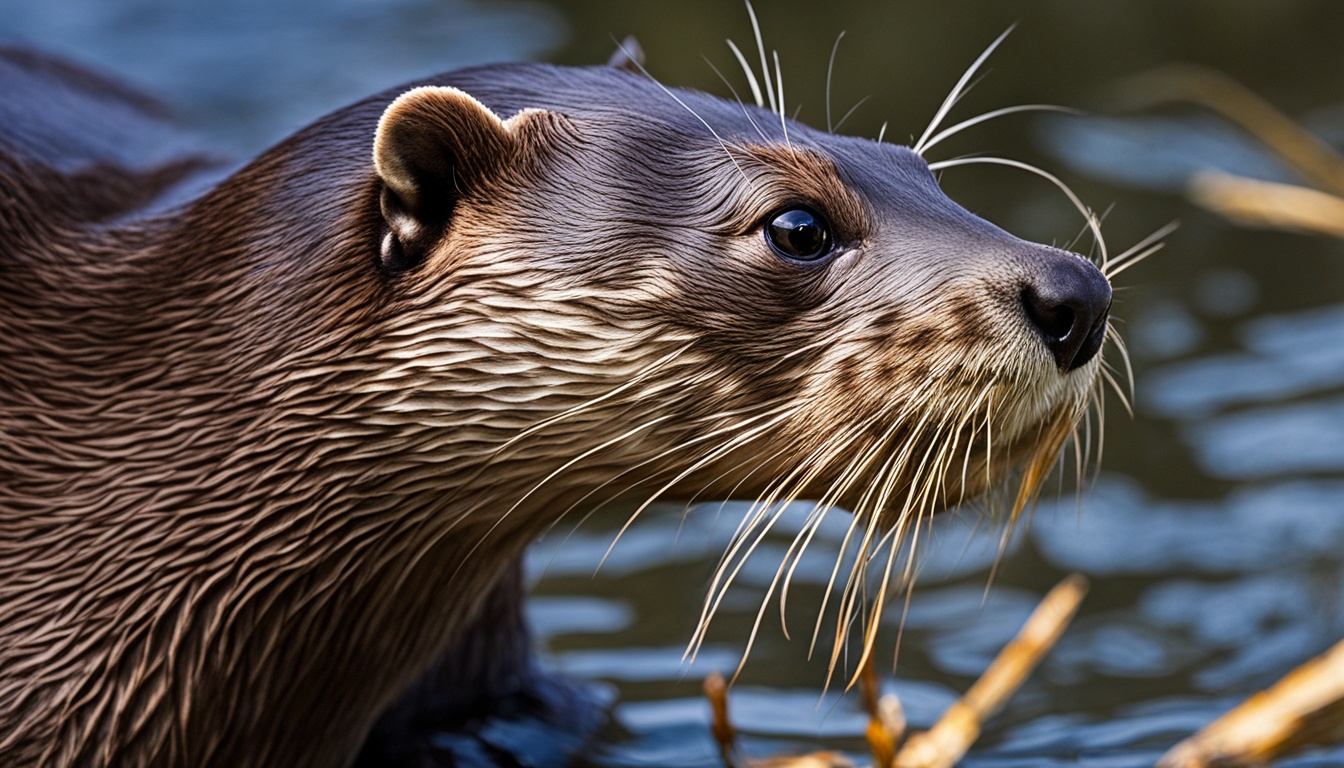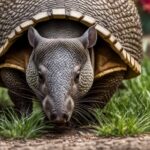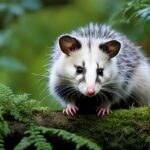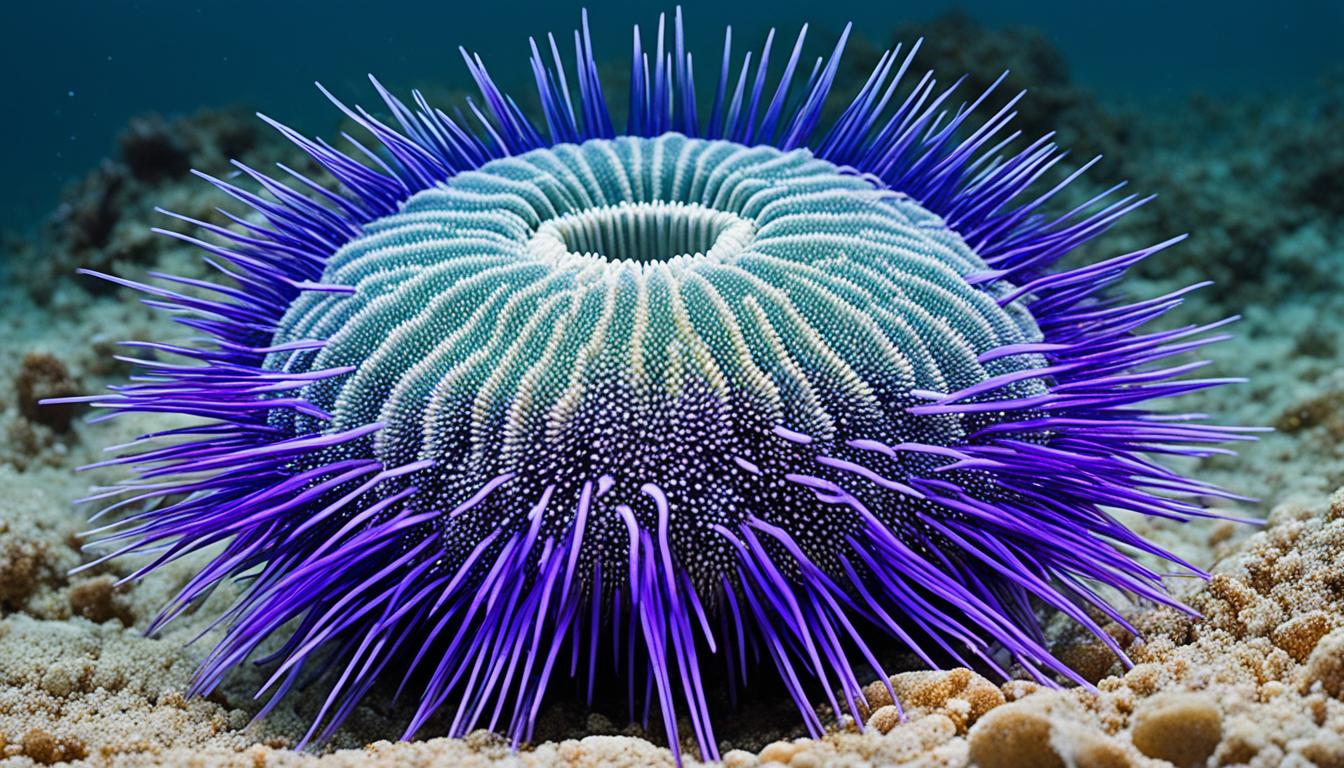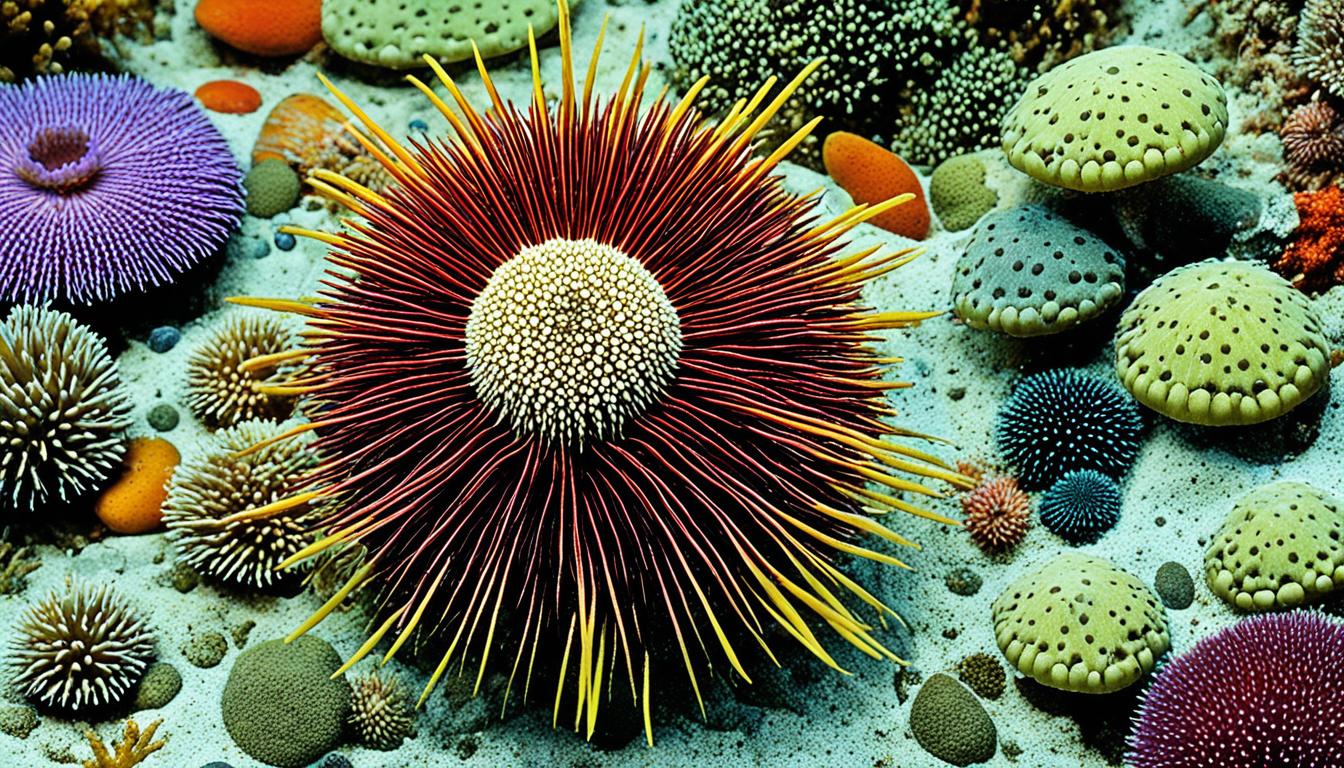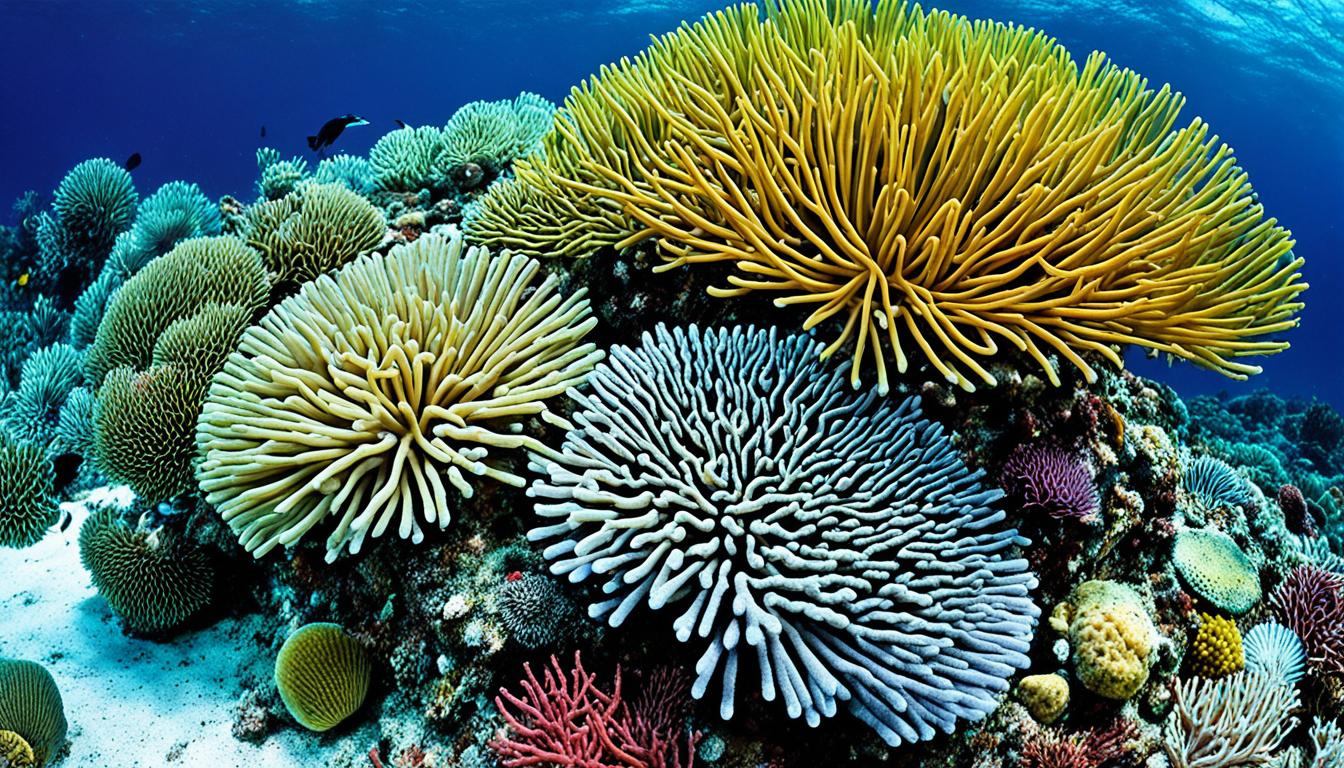The North American river otter (Lontra canadensis) is fascinating. It’s known for its special diet. It lives mainly in clear, clean water. This makes them key for checking aquatic health.
They mostly eat slow fish. This means they control fish populations without overdoing it.
North American river otters have special whiskers to find food. They can change what they eat easily. This skill helps them live in many places in the USA and Canada.
Knowing what these otters eat shows how they help nature stay balanced. Their diet is rich and diverse.
Introduction to North American River Otter’s Diet
The North American river otter eats a variety of creatures that live in or near water. These animals love to play and are very good at hunting. Their eating habits change depending on the area and other outside influences.
Overview of Feeding Habits
North American river otters eat what’s available, known as opportunistic eating. They enjoy fish, crustaceans, and sometimes small land animals. Because the otters’ diet changes with their surroundings, they can live in many different places.
Factors Affecting Diet
Many things affect what North American river otters eat. They must change their diet when the seasons change and different foods become available. Where they live also makes a big difference; some otters might prefer certain foods over others.
Water quality is also crucial for their food supply. If the water is not healthy, the otters’ main food sources might be few. This directly affects what they can eat.
Researchers have found that river otters rely a lot on fish for food. As the kinds of fish change in number and type, so does the otters’ diet. This shows how river otters can adjust to new or changing environments.
Primary Food Sources in the Otter’s Diet
The North American river otter mainly eats various water-based animals. Knowing what they like to eat helps us understand their part in keeping water environments healthy.
Aquatic and Semi-Aquatic Animals
These otters eat animals that live in water or at the water’s edge. They love fish, crayfish, and small creatures without backbones. This variety shows how good otters are at living in different places. They change what they eat based on what’s around and the time of year, so they never run out of food.
Importance of Fish in the Diet
Fish play a huge role in otter diets. Studies often find fish in otter droppings and stomachs. This shows how vital fish are no matter the time of year or where the otters live. Crayfish are also big on their menu, especially if they live in the area.
| Food Source | Dietary Significance | Prevalence |
|---|---|---|
| Fish | Primary | High |
| Crayfish | Secondary | Variable (based on region) |
| Other Invertebrates | Supplementary | Low to Moderate |
Fish Species Consumed by North American River Otters
North American river otters have favorite fish types. They pick the slow swimmers. This makes hunting easier and uses less energy.
Slow-swimming fish preference
The river otter diet in North America focuses on slow fish. These fish live in calm waters. Eating them helps otters get their needed food.
Common fish species in the diet
River otters like to eat suckers, sunfishes, and bass. They also eat carp and shiners. They don’t eat fish like trout much, as these fish are too quick to catch.
| Fish Family | Species Example | Characteristics |
|---|---|---|
| Catostomidae | Suckers | Slow-swimming, bottom-feeders |
| Centrarchids | Sunfishes and Bass | Slow to moderate swimmers, commonly found in North American waters |
| Cyprinidae | Carp and Shiners | Varied sizes, typically slow-moving in streams and lakes |
This eating approach shows river otters can adjust. It also means they don’t harm the population of fish people like to fish for.
Crustaceans and Other Invertebrates
North American river otters have different food habits, eating a lot of crustaceans and water creatures. They change what they eat depending on what’s available each season. This shows they are flexible eaters, taking advantage of what’s around them.
Seasonal Consumption of Crayfish
In river otters’ diet, crayfish are key, especially in the summer. When it’s hard to find fish, the otters turn to crayfish. These small shellfish are easy for the otters to get and provide a good meal.
Other Crustaceans and Aquatic Invertebrates
River otters eat more than just crayfish. They also enjoy other crustaceans and water bugs like dragonfly nymphs, stonefly nymphs, and adult beetles. This varied diet lets otters find food no matter the season or what’s around. It shows how good they are at finding food in different situations.
Potential Prey and Opportunistic Feeding
The North American river otter is known for being clever with what they eat in the wild. They usually feast on water-dwellers like fish and crustaceans. But, they don’t mind trying new foods. If their usual meals are hard to find, they’ll eat things like frogs, birds, and small mammals.
Eating different things helps these otters survive in many places. Sometimes, they even eat plants, which is pretty flexible. This diet range helps them live in rivers, lakes, coasts, and marshes.
North American river otters are awesome at finding food, making them strong hunters. They’re good at changing what they eat based on what’s around. This skill helps them live well and do their part in nature.
Regional Variations in Diet
North American river otters’ diets change depending on where they live. The diet differences come from the food that’s nearby, the type of land, and the weather there.
Diet differences across North America
In various places, river otters eat different things. Coastal otters often eat sea creatures, but those living further from the coast eat more freshwater animals. This shows how the local food and environment shape their diets.
Impact of habitat types on diet
Where otters live greatly affects what they eat. Otters in marshes might eat small animals, while those in the forest eat more fish and crayfish. Their ability to adjust highlights their incredible skill at finding food in different places.
| Region | Primary Diet Component |
|---|---|
| Coastal Areas | Marine Invertebrates |
| Inland Rivers | Freshwater Fish and Crayfish |
| Wetlands | Amphibians and Invertebrates |
| Forest Rivers | Fish and Crayfish |
Impact of Seasonal Changes on Diet
Seasonal changes greatly affect what the North American river otter eats. The environment changes the types of food available, which affects the otters’ diet. This shows how adaptable otters are when it comes to finding food.
Winter vs. Summer Prey Availability
In winter, otters face a challenge when fish are hard to find. They may turn to other food sources like fish eggs or other animals. This helps them make sure they’re getting enough food in the colder months.
Summer, on the other hand, is a feast for otters. They find plenty of crayfish, little fish, and more. This makes their diet more diverse and nutritious in the warmer weather.
Migratory Patterns of Prey
Migration also affects what otters eat. When fish move to spawn, it’s a big meal for otters. This shows how clever otters are at finding extra food when needed.
Otters change how they hunt to match the changing food sources. They use these opportunities to keep a well-rounded diet all year long.
What is the diet of a North American river otter?
The North American river otter eats many kinds of foods from the water. Fish, crayfish, crabs, and invertebrates are key parts of their diet. They are very skilled at capturing these creatures in their environment.
Sometimes, they also eat birds, their eggs, and small land animals. This wide diet helps them thrive. They are experts at finding food in different places, adapting to their changing surroundings.
“The diet of North American river otters reflects not only their role as apex predators but also their incredible adaptability within aquatic ecosystems.”
Knowing what river otters eat shows their impact on the environment they live in. They control the health of their surroundings through their eating habits. Their natural ability to find food supports the balance of their ecosystem.
Feeding Behavior and Hunting Techniques
It’s crucial to know how the North American river otter eats and hunts. This knowledge helps us see their smart ways to stay alive. They change their ways to get the most food in different places.
Daytime vs. Nighttime Feeding
North American river otters eat at different times of the day. In colder months, they hunt more in the day to catch prey better. This shows their cleverness in choosing the best times to get food.
Use of Whiskers and Sense of Smell
Otters depend on their whiskers and smell to find food. These body parts help them search and find meals, even in dark water. Their use of these senses shows their high-level skills at hunting in tough places.

Their feeding and hunting ways prove they’re top predators. They can do well in many situations and find food where it’s hard to get.
Interactions with Other Species in the Food Chain
The North American river otter is a key player in freshwater areas. It interacts closely with various species in the food chain. Being at the top as an apex predator brings both benefits and struggles.
Competition with Other Predators
River otters face competition from other hunters. This includes birds like eagles, fish-eating ospreys, and big fish such as pike. To stay well-fed, otters must be smart and adaptable. This need gives a glimpse into the otters’ clever and resilient nature.
Role as a Top Predator in Aquatic Ecosystems
River otters act as top predators, shaping the life in their watery habitats. They eat various animals, which keeps the ecosystem’s balance. Their presence not only indicates a lively area but also the health of the water and its residents.
Their part in the food chain highlights their significance in aquatic life. Their actions, involving hunting and competing, are vital for ecosystem health. This highlights their crucial role for upcoming generations.
